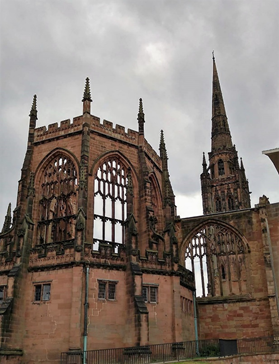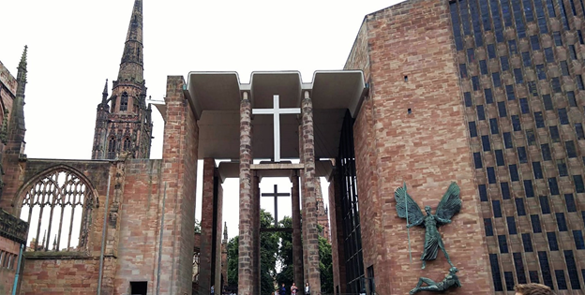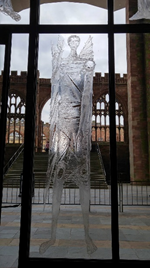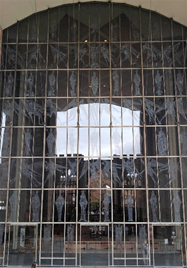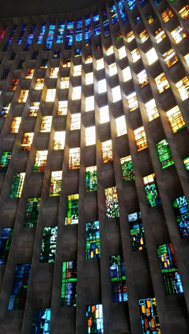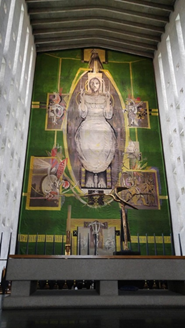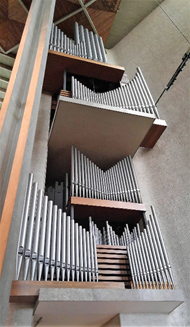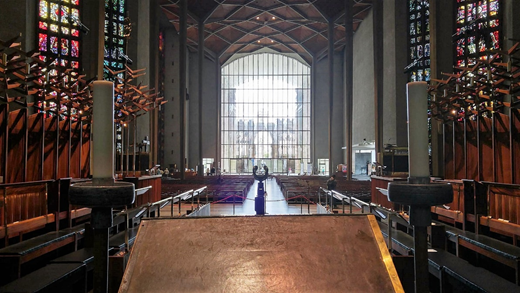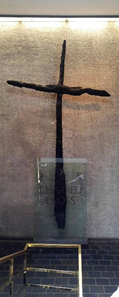Last summer, twelve students and one professor shared an unforgettable experience called English Gothic Live, a course on medieval and medievalist architecture which we studied on site while based at the University of Warwick. One of the course requirements was for each student to write a blog entry, and we will be posting all of those here over the coming weeks.
On the 14th of November, 1940 German bombs rained onto the city of Coventry. Coventry Cathedral, the religious center of the city, fell victim to the air raid and was set ablaze. Due to the destruction caused by World War 2, the original structure was reduced to ruins with only its tower remaining relatively intact. Coventry Cathedral was rebuilt next door, and the original ruins served as an open air atrium beside the modern cathedral.
Today, at this location, the past and present stand side by side. An impressive sight symbolizing the city’s strength, endurance, and triumph over a dark, war torn era.
Once you pass through the original ruins and face the entrance of the modern cathedral you are greeted by a large etched window. The window contains images of angels and saints in alternating rows.
As you enter the church, to the left is a towering wall containing a series of colourful and vibrant stained glass. The view from the congregation is made up of the choir, the high altar, and a large tapestry with religious images. The tapestry is impressively large considering it was hand dyed and woven on a loom. The importance of height is an important theme in this cathedral; many of its features tower over you, including the cathedral’s organ pipes.
The walls of the church are made of thick, grey concrete and initially no windows are to be seen. To be truthful, my first impression of the cathedral was that it was a little underwhelming. The congregation’s view is solely made up of plain gray walls with all the attention directed towards the choir and apse. In contrast, when standing at the altar looking back at the congregation you face stunning, beautifully designed stained glass that cannot be seen when you first walk in. The purpose for such a design is that light from the stained glass windows would stream into the cathedral and onto the choir and high altar without the congregation being able to identify its source, thus giving the choir and apse an increased otherworldly aura. The view from the altar is spectacular, you are faced with numerous columns of wonderful stained glass windows. You also face the window etched with saints and angels spanning the height of the cathedral which shines bright with the sunlight as well. This cathedral is very modern; the choir is embellished with modern sculptures.
Coventry Cathedral also houses a cross made out of charred, wooden roof beams. When the original cathedral was bombed, the ceiling caved in and came crashing down. Out of the rubble two roof beam fragments were tied together to form a cross. This is yet another symbol of the city’s endurance and the power of their faith even in times of great sorrow and hardship.
